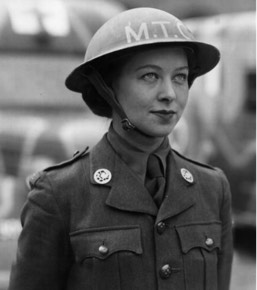Sign up for FlowVella
Sign up with FacebookAlready have an account? Sign in now
By registering you are agreeing to our
Terms of Service
Loading Flow

During World War One, women volunteered for essential work in order to release men to go into the armed forces. Some 25 years later, as World War Two loomed, campaigns emphasised the need for women to volunteer in similar fashion. It was always clear, however, that this time volunteering was not going to meet the demands of wartime production, and in 1940, a secret report by Sir William Beveridge demonstrated that the conscription of women, as well as of men, was unavoidable.
From spring 1941, every woman in Britain aged 18-60 had to be registered, and their family occupations were recorded. Each was interviewed, and required to choose from a range of jobs, although it was emphasised that women would not be required to bear arms. Many women, however, were eventually to work - and die - under fire.
In December 1941, the National Service Act (no 2) made the conscription of women legal. At first, only single women aged 20-30 were called up, but by mid-1943, almost 90 per cent of single women and 80 per cent of married women were employed in essential work for the war effort.
In 1944, Olive Owens, aged 17, was working as an air raid warden in Croydon, Surrey.
'One day when I was on duty, a V2 rocket dropped on the corner of Park Road and King's Road. It was complete devastation. We dug and dug until our fingers bled. My most vivid memory is of an arm raised, to call for silence, when someone heard tapping among the ruins... '
'The American Red Cross was very good at keeping us in doughnuts and American coffee and I also remember well the astonishment of one American Sergeant when he realised how young I was to be doing that job and working full-time elsewhere too - but it was nothing in those days. Everyone did it.'

THE WAR YEARS 1940-45